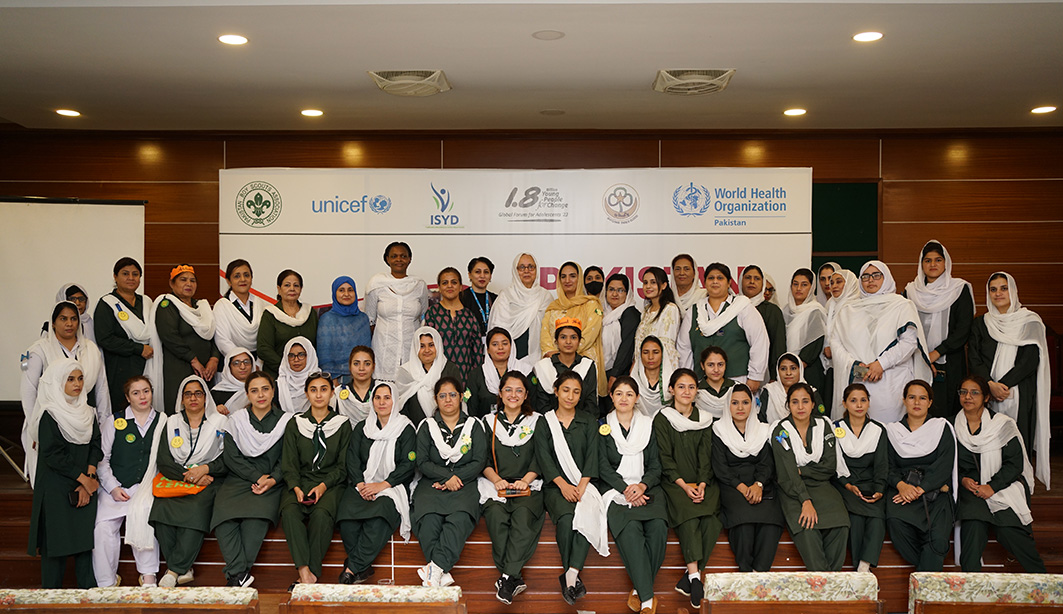By: Syeda Saman Fatima
In the mosaic of our modern world, we find an unsettling and tragic pattern that stains the fabric of humanity—an epidemic known as child marriage. Deeply entrenched in culture and tradition, this global scourge continues to afflict millions of young lives, casting a long shadow over their futures. Concerned global citizens must confront this issue head-on, as it robs children of their innocence and potential.
Amid our age of innovation and progress, the persistence of child marriage defies reason. In the wake of technological marvels and scientific breakthroughs, how can we allow child marriage to persist, erasing the childhoods of countless innocent souls? This is a question that should weigh heavily on our collective conscience.
Consider the alarming statistics that underline the magnitude of this crisis: a staggering 40 million girls were forcibly married between 2022 and 2023, with predictions suggesting that an additional 150 million may face the same fate by 2025. Each digit in these figures represents a young life deprived of opportunities, dreams crushed under the weight of oppressive traditions. How can the global community remain complacent in the face of such harrowing numbers?
Child marriage is not a distant issue; it is an insidious plague that infiltrates communities worldwide. Even in nations boasting rich cultural heritage, such as Pakistan, child marriage stains the lives of its young citizens, particularly in provinces like Sindh and Balochistan. Shockingly, one in four girls in Pakistan is married before her 18th birthday, despite laws unequivocally deeming it illegal.
Pakistan’s legal framework, exemplified by the Pakistan Penal Code’s section 498B, condemns child marriage with penalties of up to seven years in prison and substantial fines. However, these laws have yet to deliver the decisive blow needed to eradicate this deeply rooted practice. How can we bridge the chasm between law and action?
The COVID-19 pandemic has further deepened the vulnerability of economically disadvantaged communities, pushing young girls into early marriages as families grapple with financial hardship. In a time when we should offer protection and support, we unintentionally contribute to perpetuating this cycle of suffering.
The consequences of child marriage are profound and far-reaching. It robs young brides of their education, condemning them to lives of domestic servitude. Early pregnancies, often associated with child marriage, lead to a higher risk of health complications and maternal mortality. Moreover, child brides are more likely to accept violence as a norm within their marriages.
“It was very hard for me when I got married at 13. The man I was married to was twice my age,” says 15-year-old Aisha, one of the victims of early marriage. She elaborates further, “I was scared when the news came to me, and I did not know how to behave well with my family members. I was totally far from well-mannered in speaking, but I was given the responsibility of a house. Dealing with this situation was out of my capacity, and I was depressed since I found no right person to listen to my grumble and grievances.”
According to current records, Pakistan has an embarrassing record, especially in Sindh and Balochistan provinces. Every day, the proportion of child marriage is increasing rapidly. Pakistan Penal Code’s section number 498B strictly prohibits child marriage and declares this act as illegal throughout the country. Sanctions include seven years’ imprisonment and fines of Rs 50,000 for those who promote it.
A report stated that Maldives, Sri Lanka, and Pakistan were ranked first, second, and third, respectively, in South Asian countries in reducing early marriages. South Asia leads the world in reducing child marriage. However, to completely eradicate it by 2030, reforms in South Asia should be accelerated sevenfold.
About 18% of girls in Pakistan are still married as children, totalling 1.9 million. That means one in six girls in Pakistan is married at an early age, even though the legal minimum age for marriage in the country is 18 years.
However, the rate of child marriage in Pakistan is slightly better than the world average of 19%, especially compared to India, Bangladesh, Afghanistan, Nepal, and Bhutan, which lag far behind.
Bangladesh has the highest child marriage rate in South Asia at 51%, while the lowest is in the Maldives at just 2%. India’s child marriage rate is 34%, where one in three girls is married at an early age.
Even though South Asia leads the world in reducing child marriage, one in four girls in the region is married before their 18th birthday.
The number of child brides in South Asian countries is around 300 million, accounting for 45% of the world’s population.
Three out of every four brides in the region give birth when they are still teenagers.
According to a UNICEF survey, 55% of brides in Pakistan believe that wife beating is permissible.
Around 41% of women in India and 33% in Bangladesh also consider violence by their husbands as valid.
“Girls who marry in childhood face immediate and lifelong consequences. They are less likely to remain in school and face an increased risk of early pregnancy, which in turn heightens the risk of child and maternal health complications and mortality,” a UNICEF news statement read.
It added that the practice could also isolate girls from family and friends, as well as exclude them from participating in their communities. This takes a heavy toll on these girls’ mental health and well-being.
As global citizens, we must confront these pressing questions: How can we stand by while children’s futures are stolen away? How can we allow a practice that perpetuates suffering to persist in our midst? It is a moral imperative that we collectively act to eradicate child marriage.
In closing, we must ask ourselves: Can we, in good conscience, turn a blind eye to this global epidemic? Can we continue to let tradition overshadow the futures of millions of innocent children? The answers to these questions will define our humanity and shape the legacy we leave for generations to come.
As we embark on this crucial mission to eliminate child marriage, let our collective efforts serve as a testament to our commitment to safeguarding the rights and dreams of the world’s most vulnerable—the children who deserve to grow up in a world where their innocence is cherished, and their potential knows no bounds.
The writer is a student of English Literature. She can be reached at [email protected]


